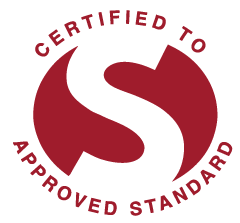
Biking to school
Biking to school can be a great way for kids to get exercise, develop confidence and learn to share the road safely with other road users.
Once children are confident on their bikes and have completed cycle skills training, they may be keen to bike to school by themselves or with friends. Younger children (under 10) should always be accompanied by an adult.
Practise riding the safe routes with your children and discuss what to do if anything unexpected happens and how to get through tricky bits. Sometimes it’s best to hop off and walk certain sections. In particular, watch out for driveways and intersections where vehicles may turn unexpectedly.
Children should always wear a helmet and follow the road rules. Regularly check their bike and helmet for damage and fit.
Before you ride always do your safety checks!
Helmet Check
Check your Shell, Styrofoam, and Straps for signs of wear or damage. Check your helmet has the right standards approved Safety Sticker*.
Use the 2-4-1 method to fit your helmet correctly:
2 fingers between your helmet and eyebrows.
4 fingers in V’s along the straps either side of your ears.
1 (or maybe 2) fingers between your buckle and your chin.


* sample of standards approved safety stickers
Clothes Check
Check you have no loose clothing or shoelaces that can get caught in moving parts.
Bright colours make you stand out during the day. Lights and reflective gear is best at night. Wear the right clothing for the weather and shoes that cover your toes.
Legal Requirements for Bicycles
A. A red rear reflector (visible from 200m).
B. Good brakes on both wheels.
If you are cycling at night or in poor visibility, your bike must have:
C. One or more steady or flashing rear-facing red lights visible from 200m.
D. One or two white headlights visible from 200m. Only one may flash.
E. Pedal reflectors on front and back of each pedal or wear reflective material.

‘ABCD Quick’ Bike Check
Before you ride, check your bike is safe.
A is for Air – in the tyres. Also check the tyre spins freely without wobbling and older tyres still have enough tread.
B is for Brakes – check each brake is working
by rolling the bike forward and squeezing
them one at a time.
Always use Both Brakes when stopping.
C is for Controls – chain, cranks and handlebars. Check the chain moves freely and the cranks don’t move from side to side. Check the handlebars are tight by ‘parking’ the front wheel between your legs, then turning the handlebars firmly. The handlebars should only move with the wheel.
D is for Drop – drop your bike gently from a height of about 10cm. Listen for unusual rattles or creaks. Remove or tighten parts where required.
Q is for quick releases – check the levers are all done up correctly and tight. Quick release levers may be found on the wheels and seat post. They should curve in around the post or towards the centre of the wheel and may read ‘closed’.
Bike fit
Make sure the bike fits you. When seated, the ball of at least one foot should touch the ground. When riding, legs should be almost straight when pedal is at the bottom of the stroke. Check that the seat post is not raised above the ‘Min Insert’ marking (the minimum amount that must be inserted) as this can cause damage to the bike frame and injury to you.

Tips to share with your child

Avoid the door zone
Avoid the door zone
When cycling in traffic, ride ‘a door and a bit more’ out from parked cars to avoid doors that may open suddenly.

Be seen
When on the road with other vehicles, ride where you have time and space to react and can easily be seen.

Take the lane
When the road is too narrow for you to be safely overtaken, ride in the middle of the lane to prevent vehicles from making a dangerous pass. This is called the ‘primary position’.



